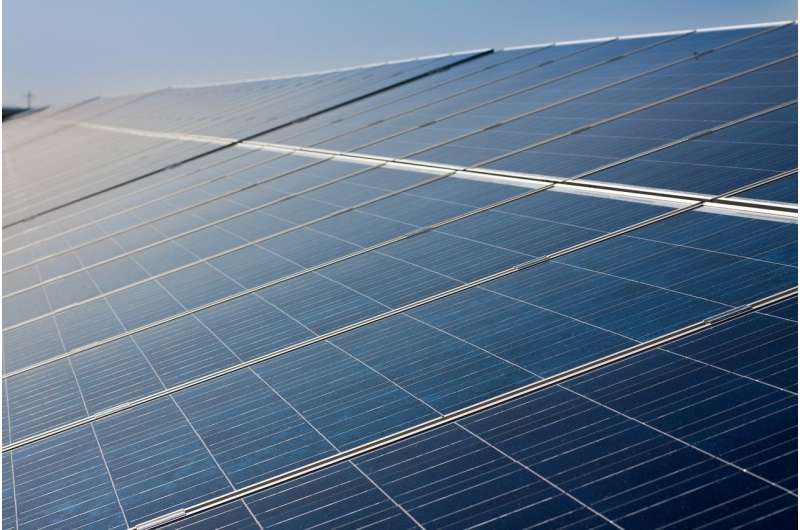August 10, 2018 report
New efficiency record for organic photovoltaic cells

A team of researchers affiliated with several institutions in China has established a new efficiency record for organic photovoltaic cells. In their paper published in the journal Science, the group describes their approach and the efficiency they achieved.
Over the past several years, scientists have been trying to find a way to improve the efficiency of organic photovoltaic cells, but have been stymied by the charge characteristics of organic materials. Organic materials are not only cleaner, but offer other potential benefits such as allowing for lighter-weight cells—they would also be bendable, making them useful for more applications. But they have proven to be inefficient compared to non-organic cells—some have even suggested they may never improve beyond 15 percent. Those based on silicon, by comparison, are in the 18 to 22 percent range. In this new effort, the researchers in China claim to have found a way to build an organic photovoltaic cell that tested at 17.3 percent efficiency.
The researchers report that the key to their success was the use of models they developed to predict which materials would allow for multilayer use. Organic photovoltaic cells rely on the use of pairs of organic molecules—one to absorb light and release an electron and another to grab the released electron. Because of this arrangement, organic cells are made using tandem cells made with layers of different materials. The researchers suggest that past efforts to improve efficiency have not yielded desired results because of the poor choices of materials that were available for use. They suggest the way to improve efficiency is to seek out new materials that when layered allow for improved efficiency. And that is where their model comes into play.
The researchers report that their model is theory-based and works by including the characteristics of two materials—it looks at how well the two materials would work together in converting sunlight to electrical energy and produces a rating. They report also that they believe their approach will one day lead to the discovery of materials that will allow solar cells to reach 25 percent efficiency. One downside, however, is durability—the test cells used by the team began degrading after just 166 days of continuous use.
More information: Lingxian Meng et al. Organic and solution-processed tandem solar cells with 17.3% efficiency, Science (2018). DOI: 10.1126/science.aat2612
© 2018 Tech Xplore


















